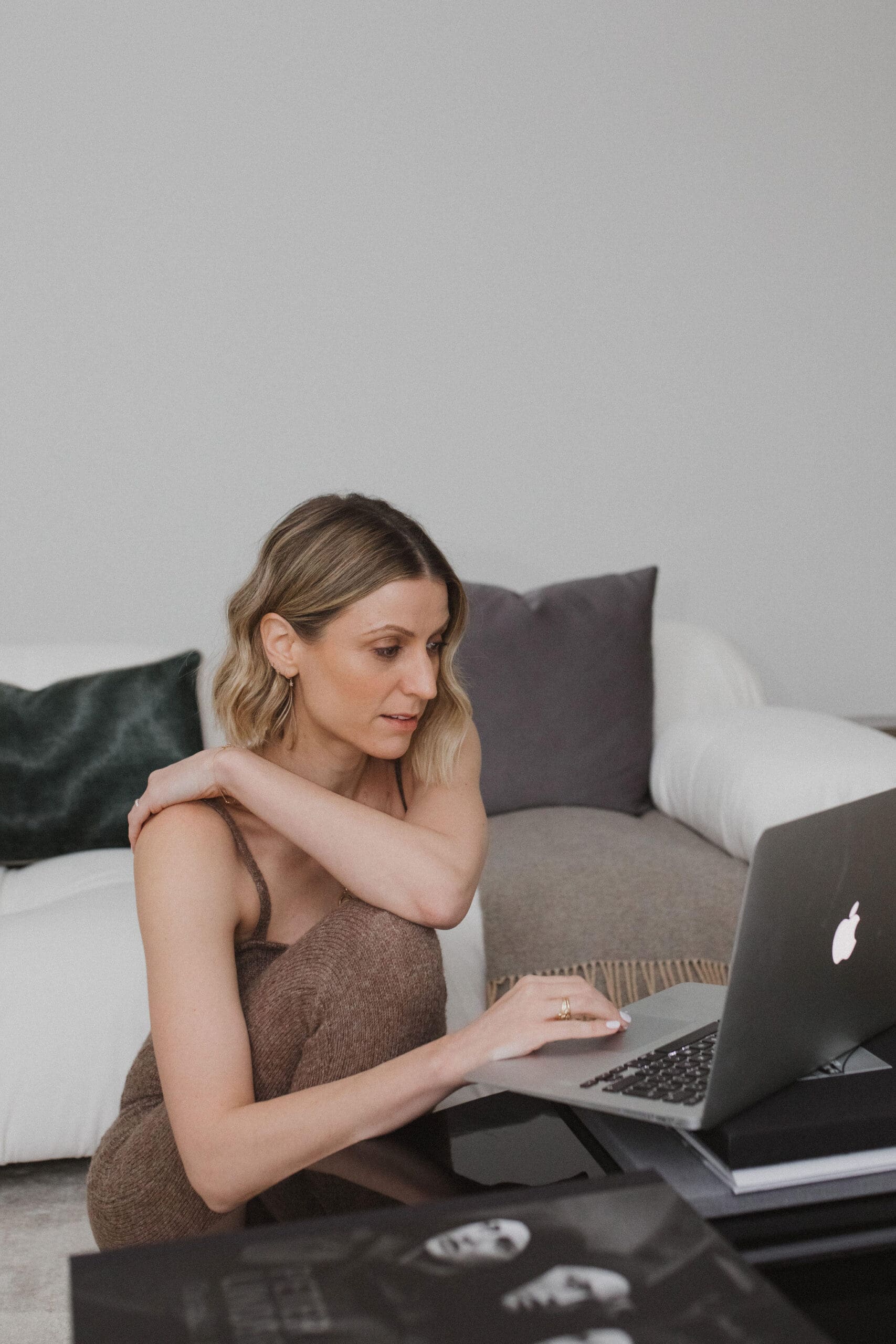
Is Tech Neck an Epidemic of the Digital Age?
October 29, 2025
Barre Might Be the Antidote.
“In every well-structured Barre Series class, we intentionally build in exercises that support posture, spinal alignment, and deep core engagement. I’ve worked with clients across every life stage, and one of the most impactful transformations I witness is how people begin to carry themselves, not just in class, but in their everyday lives. Their posture improves dramatically, and with it comes more confidence, ease, and physical freedom.
In today’s world, where technology use is constant and ‘tech neck’ is increasingly common, structured, intelligent movement isn’t just beneficial, it’s essential. Our bodies are designed to move with integrity and awareness, and when we give them that opportunity, the results are profound.”
Catie Miller, Founder of Barre Series

In today’s world, our screens rarely leave our sight — phones, laptops, tablets — and while they keep us connected, they also contribute to one of the most common modern postural challenges: tech neck. This forward-head posture creates tightness in the shoulders, strain in the upper back, and fatigue in the neck. The good news? Intelligent, mindful movement, like the kind we employ in every Barre Series class, can help you retrain your posture.
Below, Catie answers some of the most common questions about tech neck and how barre can help you realign, lengthen, and feel better in your body every day.
Q: If I already have tech neck, what barre movements or stretches can help me start correcting it?
Tech neck is increasingly common, but it’s also reversible with consistency and awareness.
Catie recommends incorporating gentle chin tucks, wall angels, and chest-opening stretches like supported fish pose or dynamic arm circles. Focus on barre movements that emphasise postural alignment — such as scapular retraction exercises or supported planks where you maintain length through the neck. Think elongation, not compression. The goal is to create space in the cervical spine and support it through balanced strength.
Q: What are your top tips for aiding tech neck at each life stage?
Children: Encourage regular movement breaks and make posture fun, think posture games or balancing challenges. Limiting screen time and teaching them how to “sit tall like a dancer” builds healthy awareness early on.
Teens: This is when postural habits start to set in. Help them build strength around the shoulders and core while improving awareness of their body alignment.
Adults: Prioritise posture correction through consistent strength and mobility training. Adjust your workspace ergonomics and add short restorative sessions to your week, even a few minutes makes a difference.
Seniors: Focus on gentle spinal mobility, core activation, and balance. Regular low-impact barre routines that emphasise spinal elongation can help maintain alignment and reduce stiffness.
Q: How often should I practice specific barre moves or stretches to see improvement?
Consistency matters more than intensity. Aim for 3–4 barre sessions per week, incorporating both postural strengthening and gentle stretching. Even 5–10 minutes daily of focused movement can bring noticeable results over time.
Adding small posture resets throughout your day — like lengthening your spine and drawing your shoulders down — helps reinforce those new patterns.
Q: Do you have tips for maintaining good posture outside of class?
Absolutely. Movement is only part of the picture — awareness is everything.
Set a timer every 30–45 minutes to check your posture. Sit tall, gently engage your core, draw your shoulders down, and slightly tuck your chin. Keep screens at eye level and feet grounded.
Try this visual cue: Imagine a string lifting the crown of your head. It instantly restores alignment and energy.
Q: How can I engage my core and back muscles to better support my neck?
Start with the breath. Deep, diaphragmatic breathing switches on the deep core muscles and stabilises the spine.
Then, draw up through your pelvic floor and gently engage your abdominals while lengthening through your spine. Barre movements like standing rows, kneeling core work, and thoracic extensions strengthen the mid-back and deep core, helping your neck stay supported without overworking.
Q: Is there a connection between poor spinal alignment and tech neck that teens should be aware of?
Yes. During adolescence, spinal curves are still developing, which makes this a key time to build awareness. Prolonged slouching can lead to patterns that are difficult to undo later.
Encourage teens to focus on full-body alignment — stacking ears over shoulders, ribs over hips, and maintaining length through the neck. These foundational cues translate into better posture well beyond the barre studio.
Q: What are warning signs that I may be overusing my neck or upper traps during class?
If you feel tension creeping up into your shoulders, gripping in the neck, or strain during ab exercises, it’s time to reset. You might also notice your chin jutting forward or your shoulders rounding.
Pause, release the shoulders down, lengthen the neck, and reconnect with your deep core engagement before continuing. Remember: barre is about mindful movement, not force.
Q: Can you suggest a short daily routine or warm-up to prevent neck tension?
Barre-Inspired Warm-Up for Tech Neck Prevention (5–7 minutes)
Focus: Spinal alignment, postural activation, and deep core support.
Standing Roll-Downs with Chin Tuck (2–3 reps)
- Begin in parallel stance.
- Gently tuck your chin, then roll down through your spine.
- Soften your knees at the base.
- Roll back up slowly, stacking one vertebra at a time.
Tip: Think about lengthening the back of your neck and engaging your core as you rise.
Shoulder Blade Glides in Second Position (8 reps)
- Arms extended at shoulder height.
- Inhale, glide shoulders up to ears.
- Exhale, draw them down and slightly together.
This activates your mid-back and releases upper-trap tension.
Core & Posture Pulses at the Barre (or Chair) (2 x 8 reps)
- Hands lightly on the barre, spine long, knees bent at 90°.
- Pull the belly in and up, soften the ribs.
- Pulse down an inch, maintaining the connection from shoulder blades to core to lower body.
Arm Circles with Postural Lift (10 reps each direction)
- Stand tall, arms extended in front at shoulder height.
- Draw small, controlled circles — forward and back.
- Keep shoulders down, neck long, and core gently engaged.
Optional: Add 0.5–1kg hand weights for an extra challenge.
Plank Prep with Scapular Engagement (30 seconds)
- Modified plank on forearms or hands.
- Slowly protract and retract the shoulder blades (shoulder blade push-ups).
- Keep neck long, core lifted, and breath steady.
Leave a Reply Cancel reply
Copyright © 2022 CatieMiller.Co Ltd (Company registered in England and Wales with Company Number: 14299972. Trading as Barre Series.
Legal bits
Back to the top
CONTACT
why barre?
Info
FAQS
THE EDIT
Quick links
ONLINE CLASSES
STUDIO CLASSES
Classes
Connect with us on socials
SIgn UP TO THE barre series newsletter
Site made by Rove
